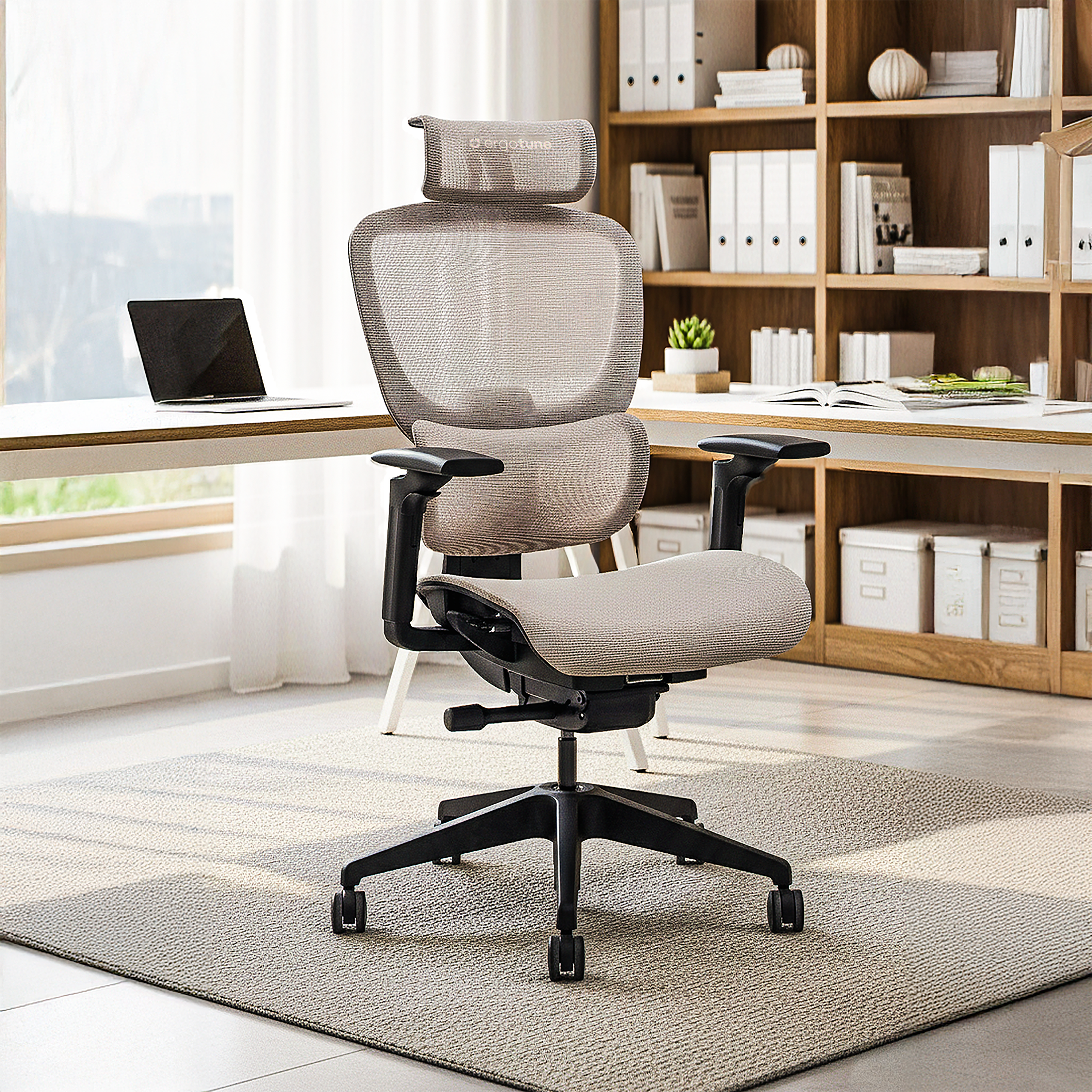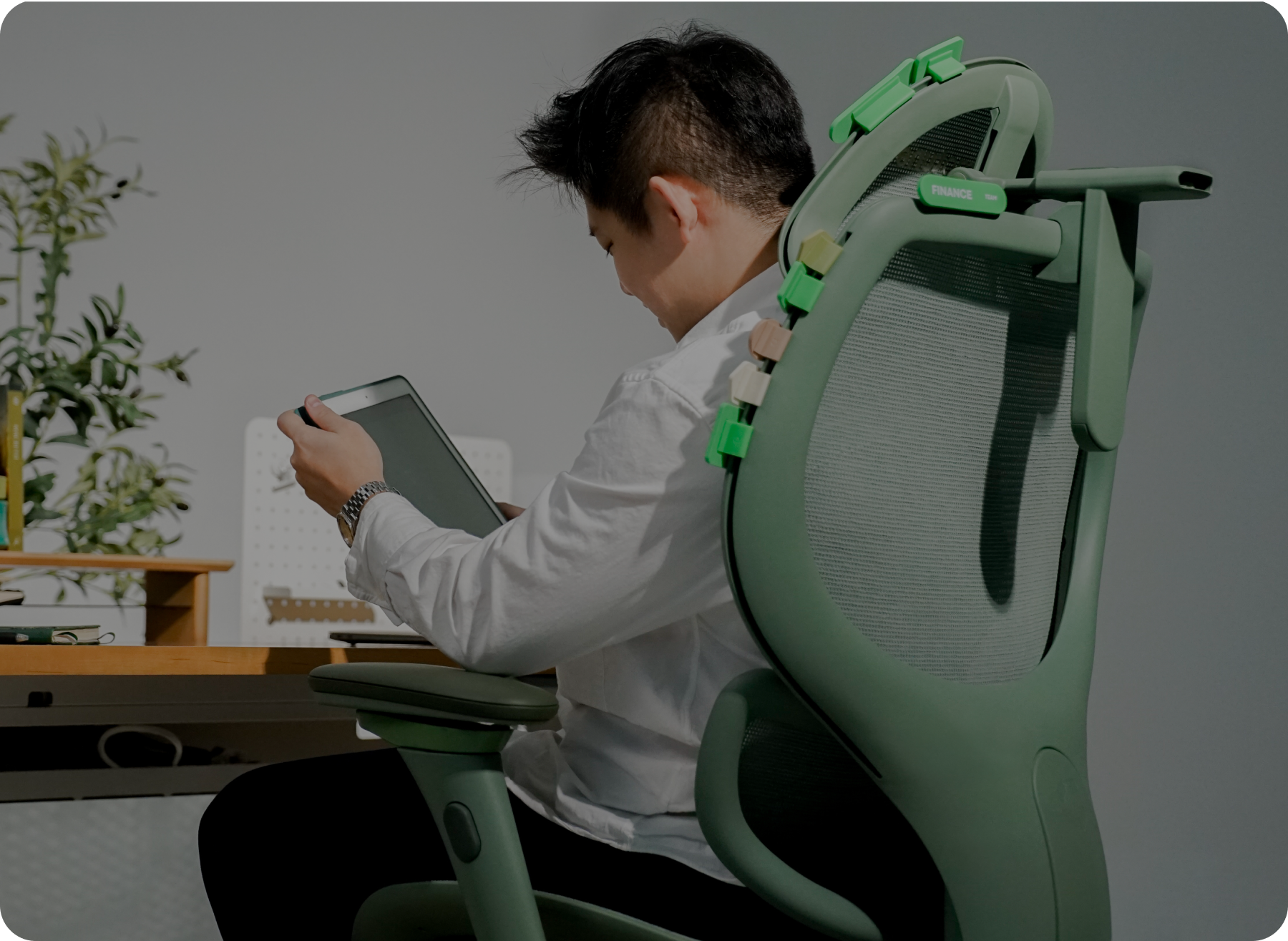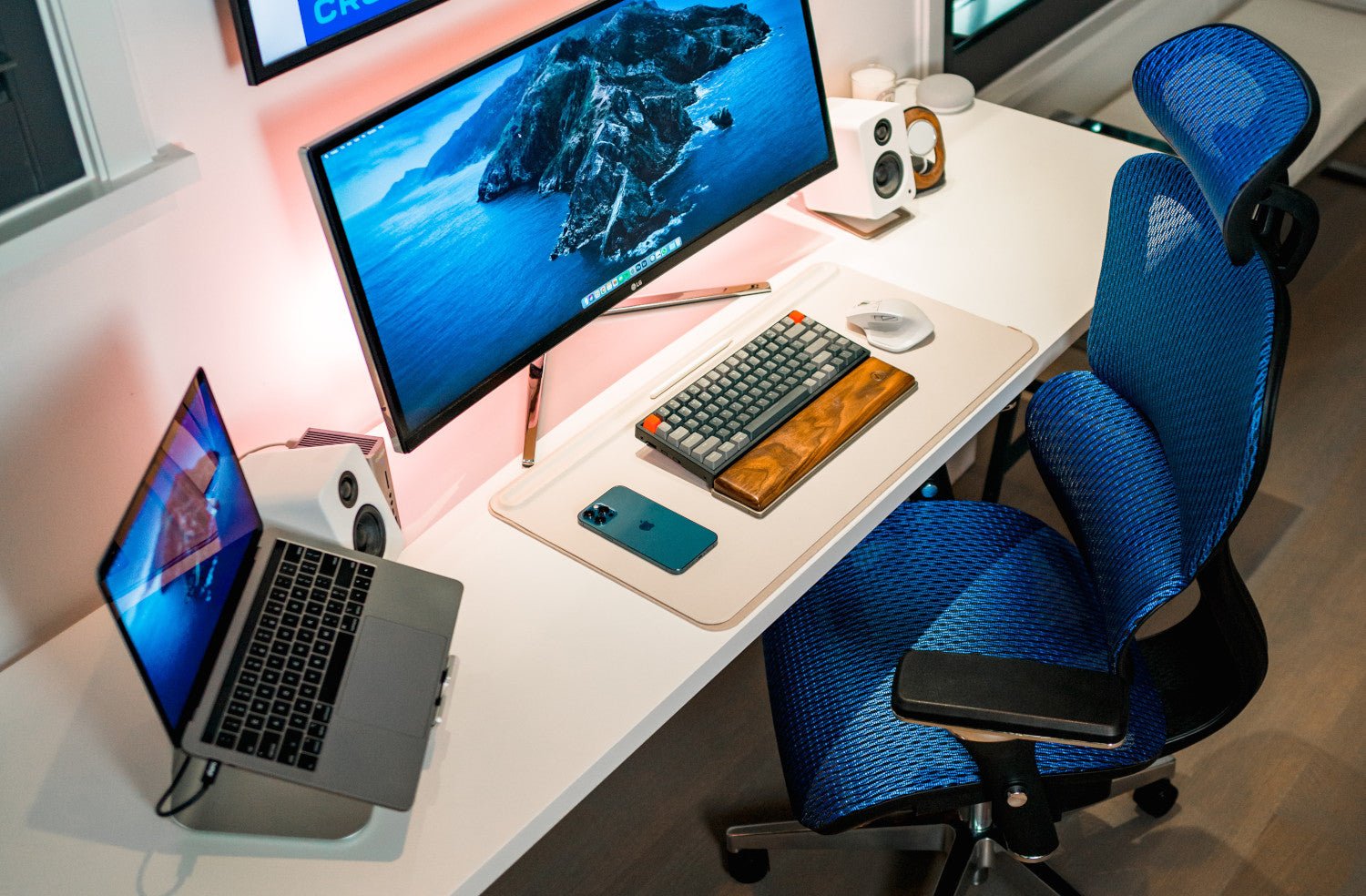
Compared to a regular office chair, an executive chair is taller, higher-quality, and designed to provide the highest degree of comfort to its user. These chairs are built for the most important of individuals--or those who like to believe they are important, anyway.
An executive chair's premium quality, tall backing, and incredible comfort represent a person's seniority; the perfect seat for "the boss". But while it's true that an executive office chair is designed for optimum comfort, does this mean that all executive chairs are ergonomic?
And what makes office chairs "ergonomic", anyway?
In this article, we will define what an executive chair is. Then, we will go over the features that make an office chair ergonomic. And then, we'll answer the question you came here with today: are executive chairs ergonomic?
More importantly, you will know exactly what to look for if you're in the market for an ergonomic office chair. To start, let's discuss what an executive chair is, and what makes it different from a regular office chair.
What Is An Executive Chair?
Just by looking at one, you can already see what sets an executive chair apart from a traditional office chair. For starters, executive chairs are bigger and have taller backrests to signify authority and seniority. Executive chairs also feature more formal design touches, such as leather/faux leather armrests and wooden backs. This is to give off an image of higher importance.
Furthermore, executive chairs are designed for extended, static use. Why? Because executives are not expected to "roll around" in their office chairs as most employees do. And because executive chairs allow for maximum comfort, the extra cushioning contributes to their slight heaviness.
It's true - sitting in an executive chair feels like heaven compared to a regular old office chair. But is the average executive chair ergonomic?
To answer this question, we have to first describe what "ergonomic" means. Keep reading:
What Makes An Office Chair Ergonomic?
An ergonomic chair is designed to provide the best support to the human body with considerations to posture, health, and comfort. Ergonomic office chairs are used to help fix and avoid back pain, fatigue, neck sprains, and many other negative effects of sitting for prolonged periods of time. For many people, using an ergonomic chair also helps them focus, which, in turn, helps boost productivity.
Now that you know the basic definition, exactly what makes an office chair ergonomic? At the very least, an ergonomic office chair should have these features:
Seat Height Adjustment
An ergonomic chair should allow you to adjust its seat height. Adjustable seat height is important because you want your knees to be a bit lower than your hips, and your feet flat on the floor. This helps maintain proper alignment of your knees and hips, which minimizes your risk of hip or lower back pain. If you are taller or shorter than the average person, you can easily adjust your seat to the appropriate height relative to the floor with an ergonomic chair.
Seat Depth Adjustment
Similarly to the height, you should be able to adjust the depth of your seat. You want to have enough distance between the front of the seat and the back of your knees. This is necessary to provide proper support and blood flow to your legs, as well as prevent unnecessary pressure on your knees.
Lumbar Support
When sitting in a non-ergonomic chair, you may notice that no matter how much you readjust your posture, your back will naturally slouch or lean forward. This is due to a lack of lumbar support - coupled with weak core muscles that the vast majority of office workers have.
To help mitigate this slouching, ergonomic office chairs have built-in (and often adjustable) lumbar back supports.
Lumbar back support prevents slouching and leaning forward by supporting the inward curve of the lower back. Usually, lumbar back support fills the gap between the seat and the lumbar spine. Hence, you will notice that it is difficult to slouch on an ergonomic office chair, keeping your entire spine in the ideal position.
Back Angle Adjustment
An ergonomic office chair should allow you to fine-tune the angle of the backrest for optimum comfort. You can unlock the back angle lever if you wish to rock back and forth on your office chair; doing so helps relieve pressure from your back, especially after sitting for a long time.
And if you're the type to need power naps for max efficiency, you need a chair that has a large recline angle plus a recline lock so that you can adjust the backrest however you wish.
Back Tilt Tension Adjustment
By adjusting the back tilt tension knob, you can modify how much pressure it will take to rock your chair back and forth. Almost all ergonomic chairs have this feature. Without it, the back of the chair will be too easy to tilt, thus providing little to no postural control.
Arm Support Adjustment
The ideal sitting posture involves the arms resting at a 90 to 110-degree angle at the elbow to help prevent pain in the shoulders and wrists.
At the very least, an ergonomic chair must have height-adjustable armrests. Some ergonomic chairs also have adjustable armrest angles so that you can position your arm pads to where they give you the most support while typing.
Headrest Adjustment
A headrest helps maintain the natural alignment of your spine from top to bottom. It also serves as a reminder to not lean forward or stretch your head towards your computer screen. The headrest should be fully adjustable (up-down, forwards-backward) to fit your head and neck properly.
Swivel Base
Almost all office chairs have a swivel base, including ergonomic work chairs. This feature allows you to turn your body while sitting. A good ergonomic chair should have a base that rotates independently from the rest of the chair, which provides a higher level of mobility.
So - Are Executive-Style Chairs Ergonomic Or Not?
Okay, let's circle back to our main question. Are executive-style chairs ergonomic?
We know you came here for a simple answer. But the reality is - the answer is sometimes.
Executive chairs can be ergonomic, but most are not.
The majority of executive office chairs available today lack the features that we have just listed in the previous section. At most, an executive chair will have a height-adjustable seat, a swivel base, and an adjustable back angle. Obviously, these features are not enough to make an executive chair truly ergonomic.
Nevertheless, an executive chair is built to be comfortable. Comfort, however, does not equate to good posture. You may be comfortable while sitting in an executive chair, but it will likely be difficult to maintain the proper alignment of your spine, legs, arms, and neck. Comfortable doesn't lead to increases in productivity, either.
This brings us to the next question: should you go with an executive chair or ergonomic chair?
Should You Choose An Executive Chair or Ergonomic Chair?
If you want to feel like a boss, having an executive chair feels similar to sitting on a throne. What power! But is that really important for your day-to-day life? Is it going to help you stay productive while maintaining proper posture? Not so much.
An ergonomic chair trumps even the fanciest executive chair in terms of comfort and health benefits. Ergonomic chairs improve posture by supporting the natural alignment of the spine. This helps avoid slouching, leaning forward, and even "tech neck". Furthermore, these chairs are full-length, providing maximum support for the entire back and neck.
Adjustable armrests, seat height, and seat depth also play a role in supporting proper posture. You need adjustable armrests to ensure that your arms are at a proper angle and height, allowing you to type for hours without straining your wrists or elbows. Moreover, you should be able to adjust your seat height and seat depth so that your knees and hips are always in the right alignment.
Ergonomic chairs also help avoid excessive trunk flexion (twisting the spine as you bend) when you lean forward to pick up something, be it from the other side of your desk or from the floor. Too much trunk flexion can contribute to bad posture, back pain, and even the risk of a herniated disc injury. With an ergonomic chair, you will be forced to sit more upright and avoid leaning forward when picking up something.
At the end of the day, these positive effects culminate into one main benefit: increased efficiency. The more optimized your posture is, the easier it will be for you to focus on your work. In turn, your concentration is up, you make fewer errors, and you don't have to do much to maintain good posture -- an ergonomic chair does it for you!
Final Thoughts On Whether Or Not Executive Chairs Are Ergonomic
The bottom line? No, executive chairs are not ergonomic. Some can be if they meet the minimum requirements of an ergonomic office chair, but most executive chairs are designed for style--not for ergonomics.
To summarize, executive chairs are:
- Designed for style and comfort, but not necessarily ergonomics
- Have high backrests to denote seniority
- Allow for minimal mobility; best for long periods of static work
On the other hand, ergonomic work chairs are:
- Designed for optimal support of the spine, shoulders, knees, legs, and arms
- Feature multiple adjustable parts to accommodate every user
- Prevent body pain (back, neck, shoulders, etc.), mental and physical fatigue
- Helps promote better concentration and productivity
- Beats executive chairs in terms of ergonomics, functionality, and practicality
With that in mind, you are better off buying an ergonomic office chair if you want to treat your body with the utmost care that it deserves. Invest in a good ergonomic chair that meets at least the minimum requirements that we've mentioned above. Once you discover the difference that an ergonomic chair can make, you will never want to go back!
Can't decide what chair to get? We suggest the ErgoTune Supreme. If it's maximum comfort, support, and value for money you're looking for, this ergonomic chair ticks all the boxes. Built with ATLAS™ lumbar support, TriTune™ 3D Support headrest, GyroBrace™ 5D armrests, and TrueTilt™ recline support, the ErgoTune Supreme has everything you need to keep the grind comfortable--and look regal while doing it!








